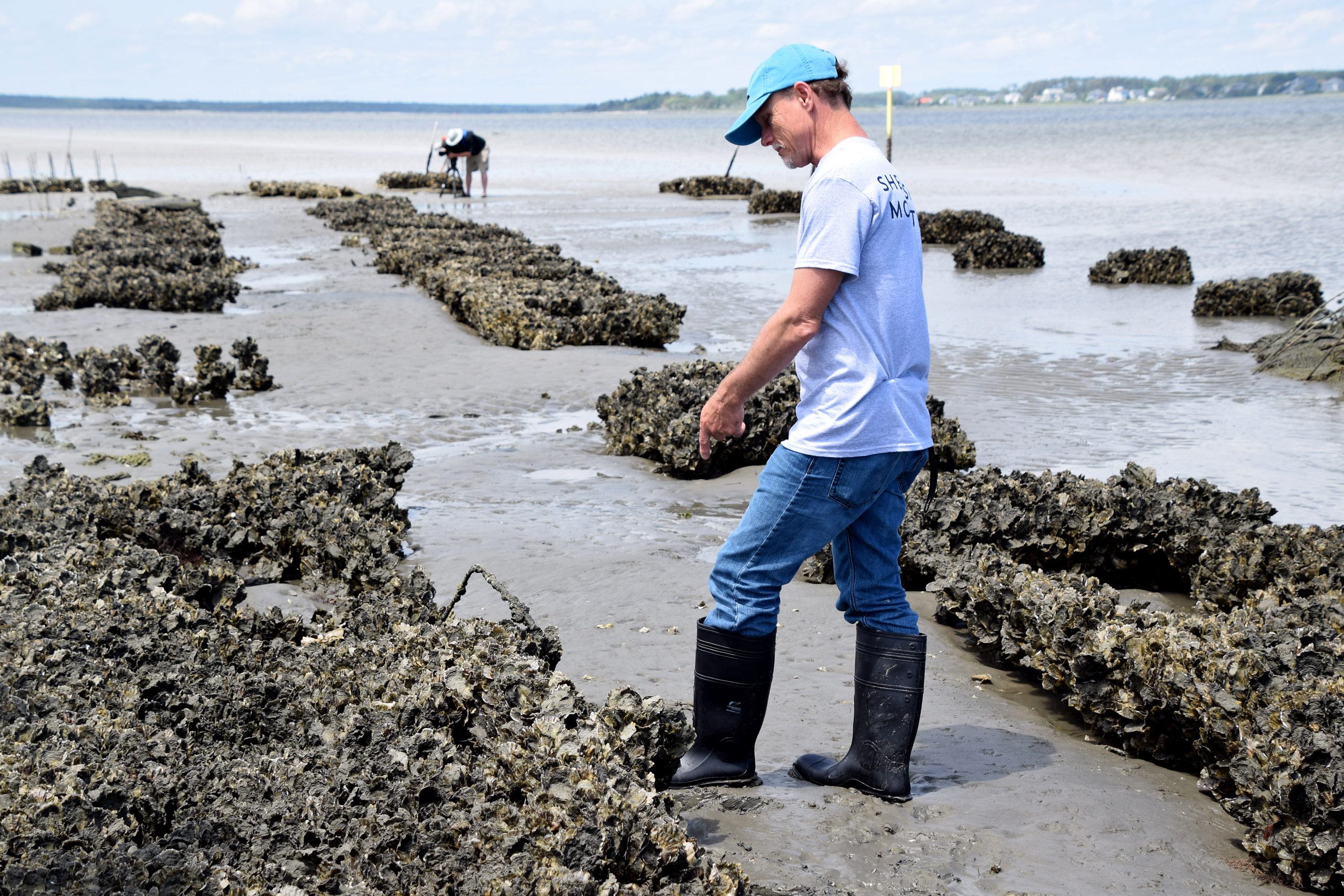
Advocates say the North Carolina Division of Marine Fisheries’ new Shellfish Lease Restoration Permit, or SLRP, will make it easier for shellfish farmers, particularly those who cultivate oysters, to participate in restoration projects.
The restoration permit took effect April 12. Oyster farmers who apply can farm oysters on their leases to be used at restoration sites. Oysters that are farmed for human consumption must comply with stricter regulations in order to ensure safety. Officials said the conditions for the new permit were developed in a way to eliminate risk to public health in the cultivation of oysters not intended for human consumption. The permit is free, and an application is available online.
Supporter Spotlight
Before the restoration permit became an option, there was no clear legal pathway for oyster farmers to grow product for restoration.
For oyster farmers like Niels Lindquist, the permit is a game-changer.
“It’s really potentially a big deal,” Lindquist said.
Lindquist is co-founder of Sandbar Oyster Co., which is based in Morehead City and has a special focus on restoration. Lindquist was one of the first oyster farmers to submit an application for the restoration permit last week. He said oysters are a key aspect of restoration, but up until now, there had not been a clear way for farmers to participate in restoration projects without accidentally breaking the rules.
“It really wasn’t clear what (the rules) were,” Lindquist said. “I really have to hand it to them, to see this issue and the opportunity that was there for people to use oysters grown on leases for restoration and find the quickest way of getting North Carolina in that game.”
Supporter Spotlight
Oysters are key actors in restoration projects. They form reefs that serve as protective habitats for other species and guard against erosion. They are also a significant boon for water quality — the average adult oyster can filter up to 50 gallons of water in a single day.
And yet, for all of those benefits, previous legislation had never designated a clear pathway for shellfish farmers to sell their product to be used in restoration projects. The laws in place all focus on regulating shellfish cultivation for human consumption. So, in lieu of live product from oyster farms, many restoration efforts implement the use of oyster shells. The goal is that oyster shells, rock or cement will act as substrate, or the surface upon which organisms like oysters can grow, and will attract wild oyster larvae that will colonize the substrate.
But the process can take years to be effective. External factors can inhibit recruitment rate. Being able to transport live oysters to restoration sites provides a clearer pathway toward restoration.
Division of Marine Fisheries Habitat and Enhancement Section Chief Jacob Boyd said that the permit option was largely inspired by the onset of the coronavirus pandemic. Widespread restaurant closures posed a threat to the oyster industry, which had a large yield and no one to sell to. The division began meeting with other stakeholders to try and find a creative solution for farmers in the shellfish industry.
“We wanted to try to figure out a way to legally allow growers to use shellfish grown on a shellfish lease to be able to sell that product to be placed on a restoration site,” Boyd said. “Because at that time, we did not have an avenue to do that legally.”
Things came together in almost exactly one year — exceedingly quick, compared to similar endeavors. The division had to carefully work around state and federal laws and officials didn’t want to put shellfish farmers in legal jeopardy, while still ensuring public health and safety. If they could pull it off, it could offer economic security to farmers and support ongoing restoration projects along the coast.
“I very apprehensively say ‘win-win’ in my line of work,” Boyd said. “I definitely think this would be considered a win-win for everyone.”

The North Carolina Coastal Federation, which publishes Coastal Review Online, manages multiple ongoing restoration projects and was a strong advocate for the new permit. Currently, oysters are highly valued for what they literally bring to the table, and restaurants and seafood markets drive the oyster industry. But according to the federation’s founder and executive director, Todd Miller, the value of oysters goes so much deeper. Oysters are key players in ongoing restoration projects, and this new permit will change the way restoration is planned going forward.
“I think this concept of the farms actually being a source of oysters for restoration is a relatively new one,” Miller said.
The federation was a key participant in the working groups of the past year that made the new permit possible.
“We were reached out to basically by the industry to help facilitate the discussion of what could be done to make all of this work better,” Miller said.
According to Miller, the federation would like to see North Carolina’s oyster farming industry continue to grow. The restoration permit could aid in that goal by providing growers with another means of revenue.
For farmers like Lindquist, the permit protects and expands his options for participating in restoration projects. It could encourage other oyster farmers to get involved in restoration as well.
“I think it’s nice to have the option to diversify,” Lindquist said. “Having another product line there is, from a business perspective, a wonderful thing to have in your pocket.”







